Why Is My Composite Decking Going Green?
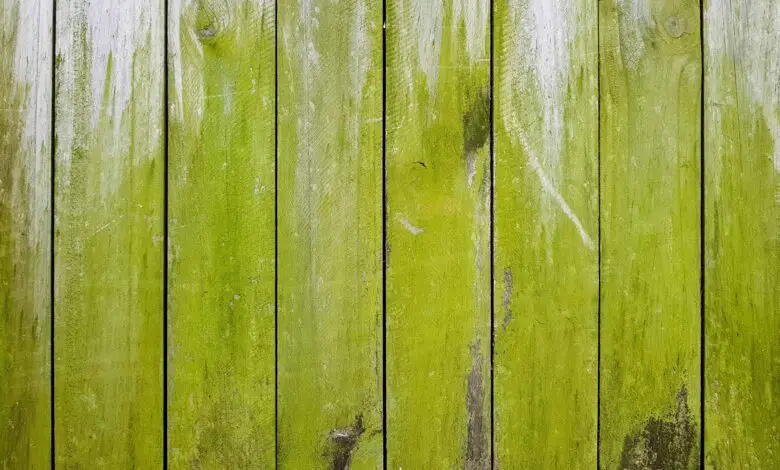
Have you noticed some ugly green-colored stuff on your composite decking recently? It is, unfortunately, a prevalent issue that most homeowners face. Your composite decking is constantly exposed to moisture, which leads to the formation of the ugly green-colored stuff, often called moss or algae.
If left untreated, a green patio can cause structural problems in addition to looking unpleasant. What causes this to happen, and how can you avoid it on your deck? Let’s read the article further to know more.
What exactly is this “Green-Colored Stuff?”
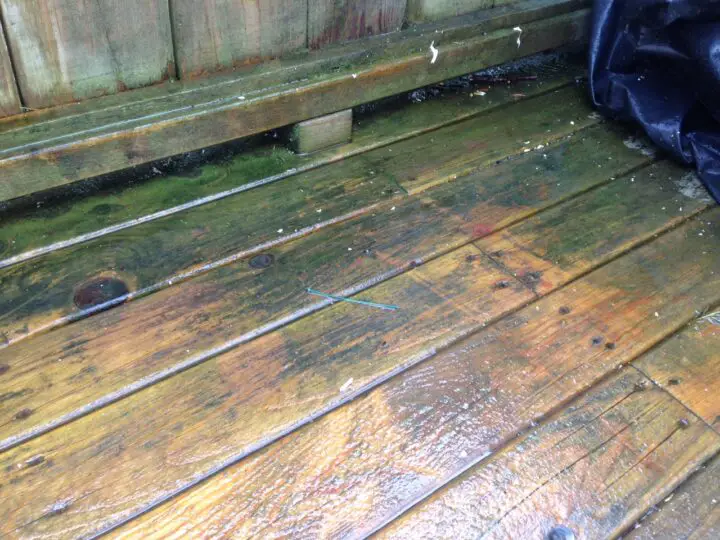
The most frequent green substances seen on patios are mold, mildew, or algae. There are thousands of tiny pores that can only be seen with a microscope on the surface of a deck. These openings, also known as “pores,” constantly collect and release moisture depending on the surrounding environment.
When the surroundings are damp and moist, they absorb moisture. When it is dry, they expel it. When extra water is trapped inside the pores of composite decking for an extended period of time, it might turn green.
Mold, mildew, and algae thrive in humid environments like these. If the composite decking does not dry out, it may acquire a slimy layer and turn green. Get composite decking with superior weather protection and durability from Dinodecking.
What Causes Algae Growth?
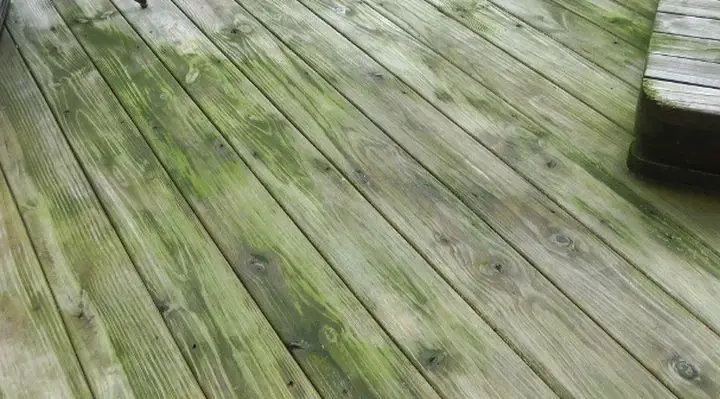
Knowing what causes algae to grow on your deck, patio, and outdoor furniture will help you avoid it from developing further. Algae grows best in a dark, moist environment, although it does not proliferate quickly.
That means it’s pretty simple to keep your composite deck from becoming green with regular upkeep. Debris and moisture are the two most essential elements to consider.
Debris: As debris gathers on your deck, they block sunlight from reaching the deck’s surface, providing an ideal environment for algae, mold, and mildew to thrive. You must regularly blow or sweep regular debris from your deck daily.
Shade: Sweeping alone may not be enough if trees or your residence’s landscaping shadows your deck. To keep algae and moss at bay, you’ll need to undertake a yearly deep cleaning of your deck.
Humidity: Does water pool and sit on certain sections of your deck when it rains? Although most decks have ample room between boards for excess water to drain, your planks may be sealed or uneven. Sweep snow off your patio in the winter to keep it as dry as possible.
How To Prevent Composite Decking From Turning Green?
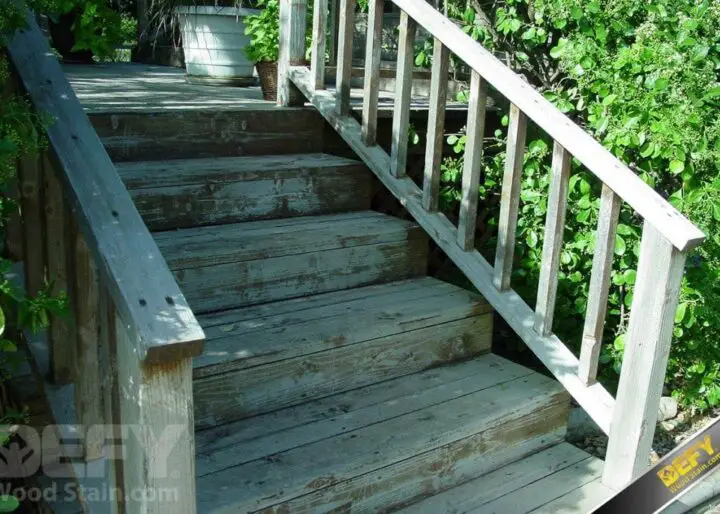
Increase the exposure to the sun.
You can make efforts to prevent your composite decking from turning green, starting by increasing the amount of sunlight it receives. Sunlight inhibits the growth of mold, mildew, and algae in several ways. It dries off extra moisture, and the ultraviolet (UV) rays kill the different fungi that may be making themselves comfortable on your patio.
You may not be able to change the direction of the sun, but you may clear overhanging branches and dense trees from your deck to allow more light in. Even if only half of your deck receives shade, the unexposed part may turn green while the other remains unaffected. In the end, direct sunshine is required to keep mold, mildew, and algae at bay on your deck.
Make Sure There’s Enough Runoff
Is water accumulating and pooling in certain parts of your deck rather than draining away? If that’s the case, it’ll likely become green. Mold, mildew, and algae grow in damp settings, as well as in darkness. When water pools on a patio, it creates an optimal environment for the bacteria to expound.
Runoff isn’t usually an issue with standard composite decking. Excess water will leak between the planks through the cracks and fissures. However, there are situations when this isn’t the case. It’s possible that the planks of your patio are sealed or that they were built unevenly. Regardless, you must ensure that your deck has adequate outflow; otherwise, mold, mildew, and algae may make a cozy home out of it.
Algae Removal from Composite Decking
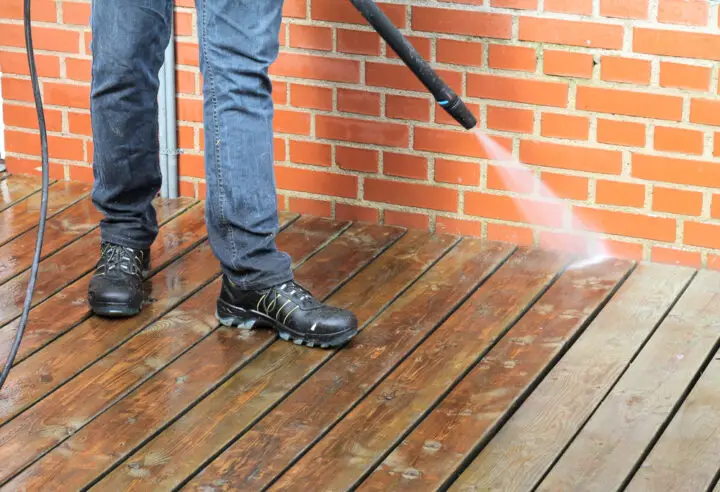
Algae growth on composite decking can shorten your patio’s structural lifespan and reduce its resilience. Algae’s most chief disadvantage is that it spreads swiftly. As a result, you must take action to eliminate it as soon as possible.
Step 1: Gather your cleaning supplies
A soft brush, soap or deck cleanser, water, power washer, or water hose are all necessary tools for removing algae from your composite decking. It’s worth noting that you can use anything readily available. Also, when cleaning, make sure to use a soft brush because a harsh one will scratch the surface of your plastic wood decking.
Step 2: Combine the soap and water in a mixing bowl
Find a bucket and fill it halfway with one gallon of water. Pour the soap into the water and stir it well with your hand until it foams. When combining the soap with the water, make sure to wear a glove. Some experts also suggest adding a third of a cup of chlorine bleach to the solution to give your cleaning campaign a professional edge.
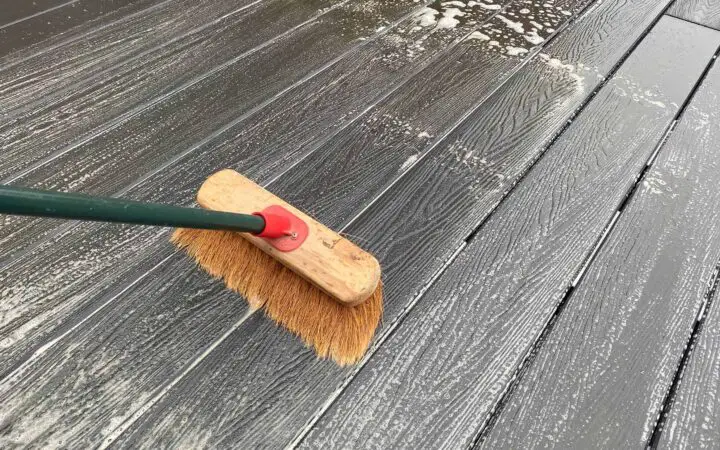
Step 3: Get Rid of the Algae
It is suggested that you try to remove the algae first before using the soapy water. Scrubbing it with a brush will do the trick. While this will not altogether remove the algae, it will make your job easier.
Step 4: Pour the solution
If the algae is all over your composite decking, you can use soapy water to rinse it down. If it’s just a tiny area, you can pour water on it. You should at least wait 10-15 minutes for it to seep into the algae you’re trying to get rid of.
Step 5: Scrub your composite decking
You can scrub your plastic wood decking with a gentle brush after waiting for approximately fifteen minutes. Scrub your composite decking boards in the direction of the grain. Scrub it thoroughly until there are no longer any traces of algae.
Conclusion
The green substance on your beautiful composite decking doesn’t only look ugly, but it can be dangerous too. You can slip while walking on it, and it may even compromise the structural integrity of your deck. You must remove algae, mold, or mildew from your patio as soon as it appears on it.
